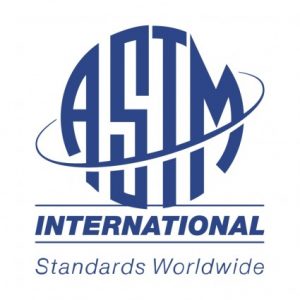
ASTM A967
General industries use this standard to describe and control the passivation of stainless steel. Passivation is a process of making stainless steel more stainless than it would be if left alone. It is based on using an acid (nitric or citric) under highly controlled conditions to remove free iron particles from the surface and to help form a metal oxide layer that increases its ability to resist rusting. It is important to understand that passivation is not a coating applied to the surface; it is a process that makes the surface more resistant to staining or rusting.
Differences Between the 2013 and 2017 Versions of ASTM A967
The ASTM A967 standard is produced and controlled by ASTM International, an international standards-setting organization based in West Conshohocken, Pennsylvania. The current version of the standard, ASTM A967/A967M – 17 was approved on July 1, 2017, and published later that month. It supersedes the previous standard, ASTM A967/A967M – 13, which was approved on February 15, 2013.
There are several important differences between the two versions:
- The first difference is the addition of a new test that can be used instead of any of the current tests which are continued. The new test is a boiling water immersion test. In addition to this new test, there are slight modifications to several of the existing tests.
- The second difference is that the copper sulfate test can now be applied to parts used in food processing.
- The third important difference is in appendix X1, which states that restrictions on certain high-strength grades such as 440 C that are subject to hydrogen embrittlement are limited to nitric acid. These restrictions do not apply to citric acid passivation.
- The fourth significant difference is the addition of Appendix X2, a general guide for selecting a passivation treatment for different grades of stainless steel.
The new version clarifies several specific details, adds new tests, removes testing parts used in food processing, clarifies restrictions applying to high-strength steels subject to hydrogen embrittlement, and clarifies information in the new addendum X2.
The current and previous versions describe the process and the specific parameters when using nitric or citric acid. Each acid has several specific combinations of concentration, temperature, required time, and other specific requirements. Both versions also describe several tests that can be used to determine the effectiveness of the process.
AMS 2700
This is a standard used by the aerospace industry to describe and control the passivation of stainless steel. Passivation is a process of making stainless steel more stainless (rust-resistant) than it would be if left alone. It is not a coating and does not change any part’s dimensions. It is based on using an acid (nitric or citric) under highly controlled conditions to remove free iron particles and other impurities from the surface and to help form a stronger metal oxide layer that increases its ability to resist rusting.
Differences Between the 2011 and 2018 Versions of AMS 2700
The AMS 2700 standard is produced and controlled by SAE international. AMS refers to Aerospace Material Specification developed and published by SAE International, which before 2006 was known as the Society of Automotive Engineers. In March 2018, SAE issued a new revision, AMS 2700 F, which superseded AMS 2700 E issued in November 2011.
There are several significant differences between the current version (AMS 2700 F) and the previous version (AMS 2700 E):
- Section 1.3.1 originally said nitric acid is to be used unless citric acid is specified. In the current version, either method can be used.
- Section 3.2.1.2 clarifies the water immersion test requires the use of deionized or distilled water in the test itself.
- Section 3.2.1.3.1 states that the copper sulfide test can now be run in advance using a test specimen of carbon or low alloy steel to ‘prove’ the process before production parts are run.
- Section 3.2.2 clarifies that visual examination of parts should be done without magnification.
- The last significant change removes appendix A, which described certain test methods used only when the purchaser specified.
Both standards describe and control how stainless steel (corrosion-resistant steel) can be made more stainless or corrosion resistant, allowing products to work in harsh conditions, to work longer and to be more reliable than they otherwise would be.
Contact RP Abrasives for Expert Passivation and Surface Finishing Services
At RP Abrasives, we can handle all your passivation needs in-house, offering a wide range of finishing options depending on your application needs. We go above and beyond, ensuring consistently exceptional results, including thorough pre-service parts cleaning and passivation based on part size, from batches of small parts to large, individual pieces.
To learn more about the innovative passivation services RP Abrasives provides, including citric acid passivation, request a quote from us today!
